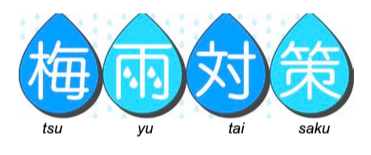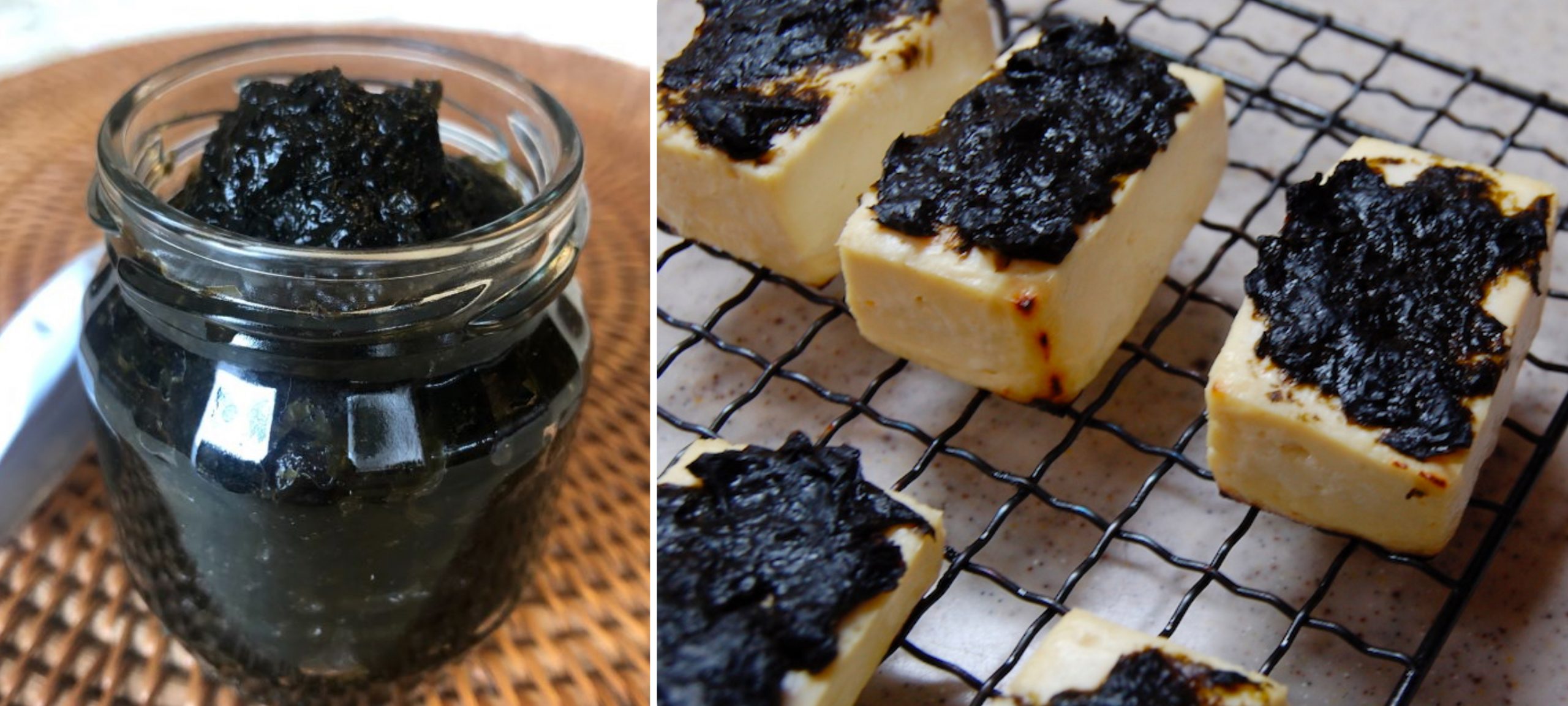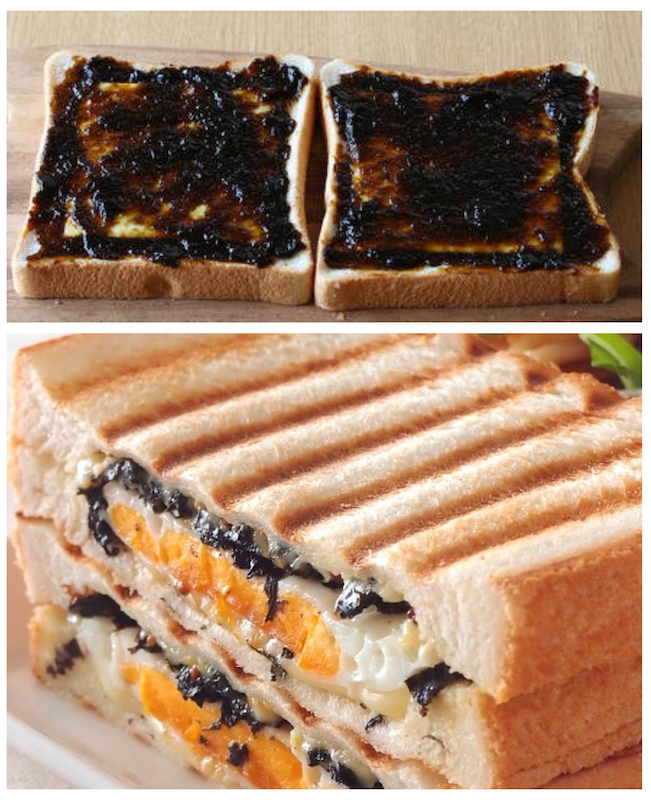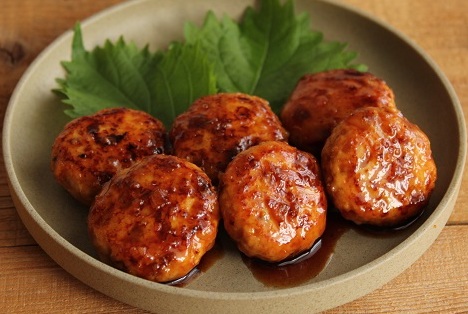
RAINY SEASON KITCHEN
TSUYU (梅雨 literally, “plum rain”) comes to the Japanese archipelago every year as spring turns to summer. The constant dampness of tsuyu encourages the growth of kabi (mildew, and molds) requiring a strategy (taisaku 対策) … and diligence (doryoku努力).
But, despite careful, persistent efforts to keep sheets of nori crisp and crunchy osembei crackers from going soggy, inevitably dampness overtakes all. Here are some tasty solutions to done-in-by-dampness foodstuffs.

Briny Black Sauce spread on slabs of tōfu broiled dengaku-style.

High humidity in Japan, especially during the rainy season, makes it a challenge to keep dried foods, dry. Despite the anti-moisture pellets that are included in most modern packages, rice crackers get sticky, and sheets of yaki nori, the toasted laver best known to Americans as wrappers for rolled sushi, go limp. Soggy yaki nori can be transformed into a thick, yummy sauce to spread on skillet-seared sea scallops, or blocks of tōfu before being broiled. This sauce can even be spread on bread instead of butter or mayo when making a grilled or toasted sandwich.
Download a recipe for BRINY BLACK SAUCE

Spicy Smashed-Sembei Sliders
I LOVE osembei rice crackers! But they chip, break, crack and get crushed, all too easily. But… crushed osembei make a TERRIFIC binder for ground meat – much tastier than plain breadcrumbs. So, when your osembei go limp and soggy: smash them!
And use the meal to make meatloaf, burgers… or these SPICY SMASHED-SEMBEI SLIDERS .




